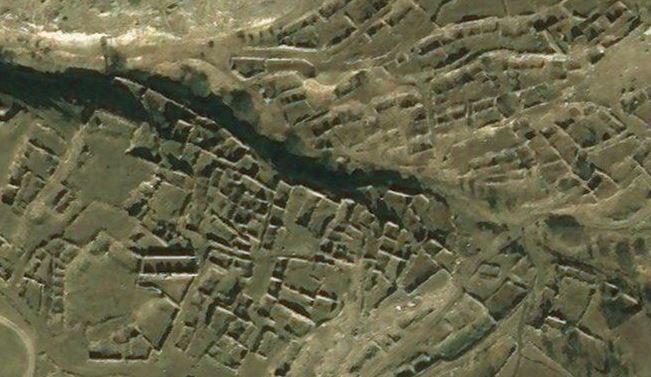This Google Map focuses on the Digors, Ossetians speaking the Digor (as opposed to the dominant Iron) language of North Ossetia. Under the influence of their western neighbours the Kabardians, many Digors converted, from either their traditional animist religion or from Eastern Orthodoxy, to Sunni Islam. It was this conversion which led to their oppression. The expansion of the Russian Empire into the Caucasus and the ensuing Caucasian War culminated in many Muslim peoples of the North Caucasus being ethnically cleansed and fleeing to the Ottoman Empire as muhajirs (emigrants, refugees) in the 1860s. Digor Ossetians were among them. During and immediately after WW2 (known to the Russians as the Great Patriotic War), Digors were one ethnos among many deported en masse by the Soviets to Kazakhstan. The majority, albeit not all, of the groups deported from the North Caucasus were Muslim (exceptions included the Black Sea Greeks).
The map shows past and present settlements of the Digors, both in North Ossetia (blue pins) and in Turkey (red pins). I should stress that the settlements shown in Turkey are believed to be Digor (rather than Iron) Ossetians, as it was the Digors rather than the Irons who converted to Sunni Islam and therefore were minded to seek refuge in or emigrate to Sunni Turkey in the 1860s. However, it is possible that some of the Ossetian communities in Turkey shown on the Google Map were in fact settled by Iron converts to Islam among the muhajirs from the North Caucasus; therefore, caveat emptor.
In the Digors’ traditional North Ossetian homeland, former settlements abandoned and destroyed are shown by the circular blue markers with the white x. In the pin texts, these are described as villages but most were very small settlements and some were inhabited by a single extended family.
The exact location of the abandoned settlements is not always clear. In some cases, satellite imagery shows clearly the outline of buildings (surviving stonework etc), presumably of villages abandoned in the C20th. In other cases, there is no immediately obvious trace at the available map coordinates, while in others the current sateliite imagery (as at January 2018) does not permit any inspection due to thick cloud cover.
Please note that the map excludes the cities to which Digors have moved as economic migrants – for example, Moscow and St Petersburg in Russia and Ankara, Istanbul and Sivas in Turkey. Digors also reside in diaspora in, for example, Kazakhstan (descendants of the deportees who have not returned) and Syria.





You must be logged in to post a comment.